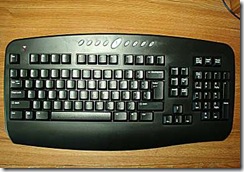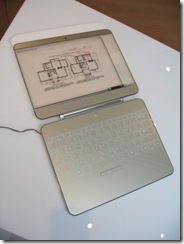2.Handle the screen carefully
Avoid touching or playing with your LCD screen. Yes, it might be fun to watch the waves generated by your finger against the screen, but LCD displays are fragile devices that must be cared for.
Take care when cleaning the screen too, and use only approved cleaning materials.
3.Don't drop it
Whatever you do, don't through your laptop and don't drop your laptop computer! Keep it safe inside of a carrying case when moving around or traveling.
Don't leave it on the edge of a table or on an unstable support of some kind. One ill fated drop to the floor could spell death for your mobile office.
Try to make sure the rubber feet underneath are in good condition and are still attached. This will prevent the device from sliding around accidentally.
What should we consider when buying a Graphics Cards?What the factors that influenced the performance of the Graphics Cards? Below provide some tips on how to we buy a value to money Graphics Cards .Let's get started.
Buying Guide to Graphics Cards.
The graphics card is a vital performance component of your computer, particularly if you play 3D games, or work with graphics and video content. The graphics card sits in an expansion card slot in your PC and it is specifically designed to process image data and output it to your monitor, enabling you to see it. A graphics card works by calculating how images appear, particularly 3D images, and renders them to the screen. 3D images and video images take a lot of processing capacity, and many graphics processors are complex, require fans to cool them and need direct power supply. The graphics card consists of a graphics processor, a memory chip for graphics operations, and a RAMDAC for display output. It may also include video capture, TV output and SLI and other functions. You can find the graphics card that suits you by comparing specification between brands and vendors online.

What are your needs?
The first decision you need to make is whether you need a graphics card for handling 3D images or whether you are simply requiring 2D image rendering. For 2D requirements, you need only a low-cost solution. In many cases, an integrated graphics solution will suffice for 2D applications.
However with 3D graphics, the performance of the graphics card will impact directly on the frame rate and image quality of 3D programs and games. The differences between the low and high-end cards can be substantial, both in cost and performance.
Rendering 3D graphics is like lighting a stage, both the geometry of the shapes in question and the lighting of it need to be taken into account. The geometry of an image calculates the parts of an object that can and can't be seen, the position of the eye and its perspective. The lighting is a calculation of the direction of the light sources, their intensities and the respective shadows that occur. The second part to presenting a 3D image is the rendering of colours and textures to the surfaces of the objects, and modifying them according to light and other factors.
Most modern graphics cards include a small microchip called the Graphics Processing Unit (GPU), which are provide the algorithms and memory to process complex images. They reduce the workload of the main CPU, and provide faster processing. Different graphics cards have different capabilities in terms of processing power. They can render and refresh images up to 60 or more times per second, calculate shadows quickly, create image depth by rendering distant objects at low resolution, modify surface textures fluidly and eliminate pixelation.
What Specifications to Consider
Processor clock speed
This impacts on the rendering capability of the GRU. The clock speed itself is not the critical factor. Rather it is the per-clock performance of the graphics processor, which is indicated by the number of pixels it can process per clock cycle.
Memory size
This is the memory capacity that is used exclusively for graphics operations, and can be as much as 512MB. The more demanding your graphics applications are, the better you will be served with more memory on your graphics card.
16-32M
64M
128M
256M
512M
640M and more
Memory bandwidth
One thing that can slow down 3D graphics performance is the speed at which the computer delivers information to the graphics processor. A higher bandwidth means a faster data transfer, resulting in faster rendering speeds.
Shader model
DirectX Shader Models allows developers control over the appearance of an image as it is rendered on screen, introducing visual effects like multi-layered shadows, reflection and fog.
Fill rate
This is the speed at an image can be rendered or "painted". This rate is specified in texels per second, the number of 3D pixels that can be painted per second. A texel is a pixel with depth (3D). The fill rate comes from the combined performance of the clock speed of the processor and the number of pixels it can process per clock cycle, and will tell you how quickly an image can be fully rendered on screen.
Vertices/triangles
Graphics chips don't work on curves, rather they process flat surfaces. A curve is created by multiple flat planes arranged to look like a curve. 3D objects are created with multiple triangular surfaces, sometimes hundreds or even thousands, tessellated to represent the curves and angles of the real world. 3D artists are concerned with the number of polygons required to form a shape. There are two different types of specification: vertices per second (I.e., angles the triangles), and triangles per second. To compare one measure with the other, you have to take into account the fact that adjacent triangles share vertices.
Anti-aliasing
A technique used to smooth images by reducing the jagged stepping effect caused by diagonal lines and square pixels. Different levels of anti-aliasing have different effects on performance.
RAMDAC
The Random Access Memory Digital to Analogue Converter takes the image data and converts it to a format that your screen can use. A faster RAMDAC means that the graphics card can support higher output resolutions. Some cards have multiple RAMDACs allowing that card to support multiple displays.
TV-out
Some graphics cards provide the option to connect a television via either a composite (RCA) or S-Video connector. TV Out
S-video Out
S-video In and S-video Out (VIVO)
YPbPr Connection for HDTV
DVI
Some graphics cards include a connector for DVI monitors, handy because a lot of LCD screens support DVI. DVI offers better image quality than the standard VGA connector.
Dual-head
Dual-head is a term used when two monitors are used side by side, stretching your desktop across both.
SLI (Scalable Link Interface.)
With SLI you can couple two graphics cards in your computer, enabling each card to take half the rendering thereby doubling the performance.
When considering your graphics card, it pays to think about how much you need your computer to process your graphics output. Using a high end graphics card with a high pixels per clock rating, large memory, fast processor and other features means that you can run the latest games efficiently, or work in intensive graphics development.
Different Models
While there are many vendors of graphics cards, there are actually only two major manufacturers of chips for graphics cards. Nearly every graphics card on the market features a chip manufactured by either ATI or Nvidia. Cards using the same graphics chip will perform roughly the same as each other. However, even though they use the same chip, some feature slightly higher clock speeds, as well as manufacturer guaranteed overclocking-an even higher clock speed than that specified. Other factors that will influence your decision should include the amount of memory a card has (128MB, 256MB, 512MB) and its additional features, such as TV-Out and dual-screen support.
Use the search facilities at Myshopping.com.au to compare the features, prices and vendors of graphics cards.















